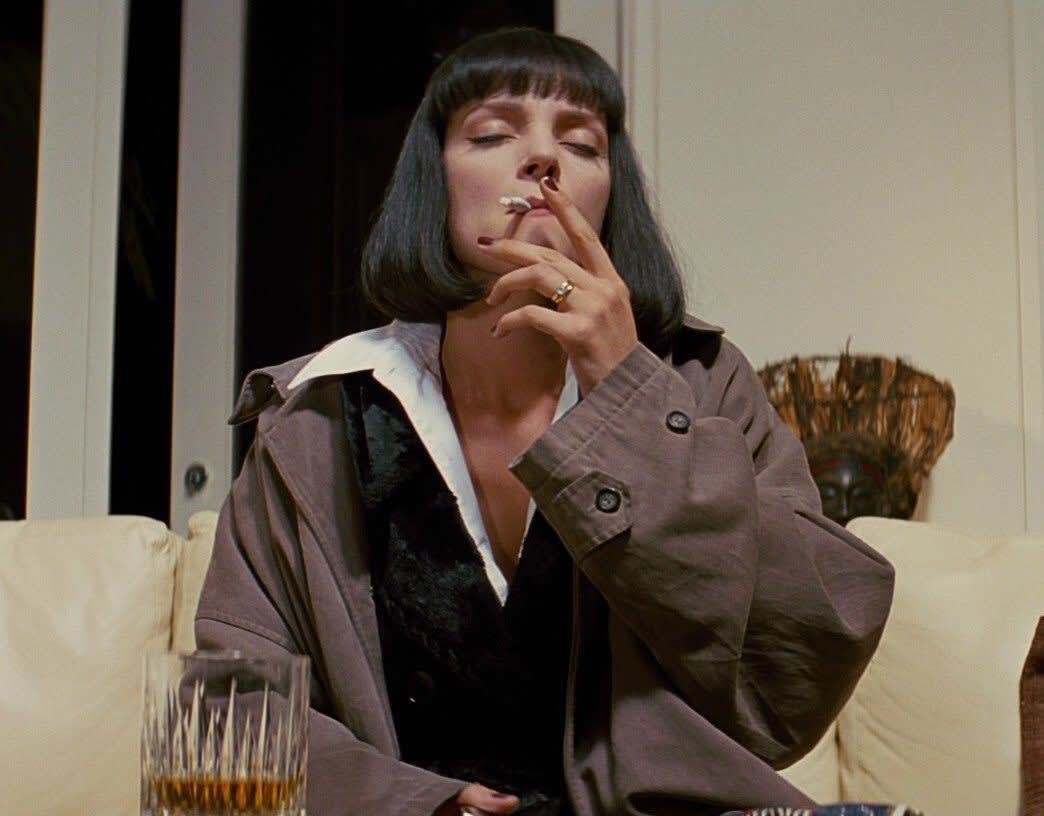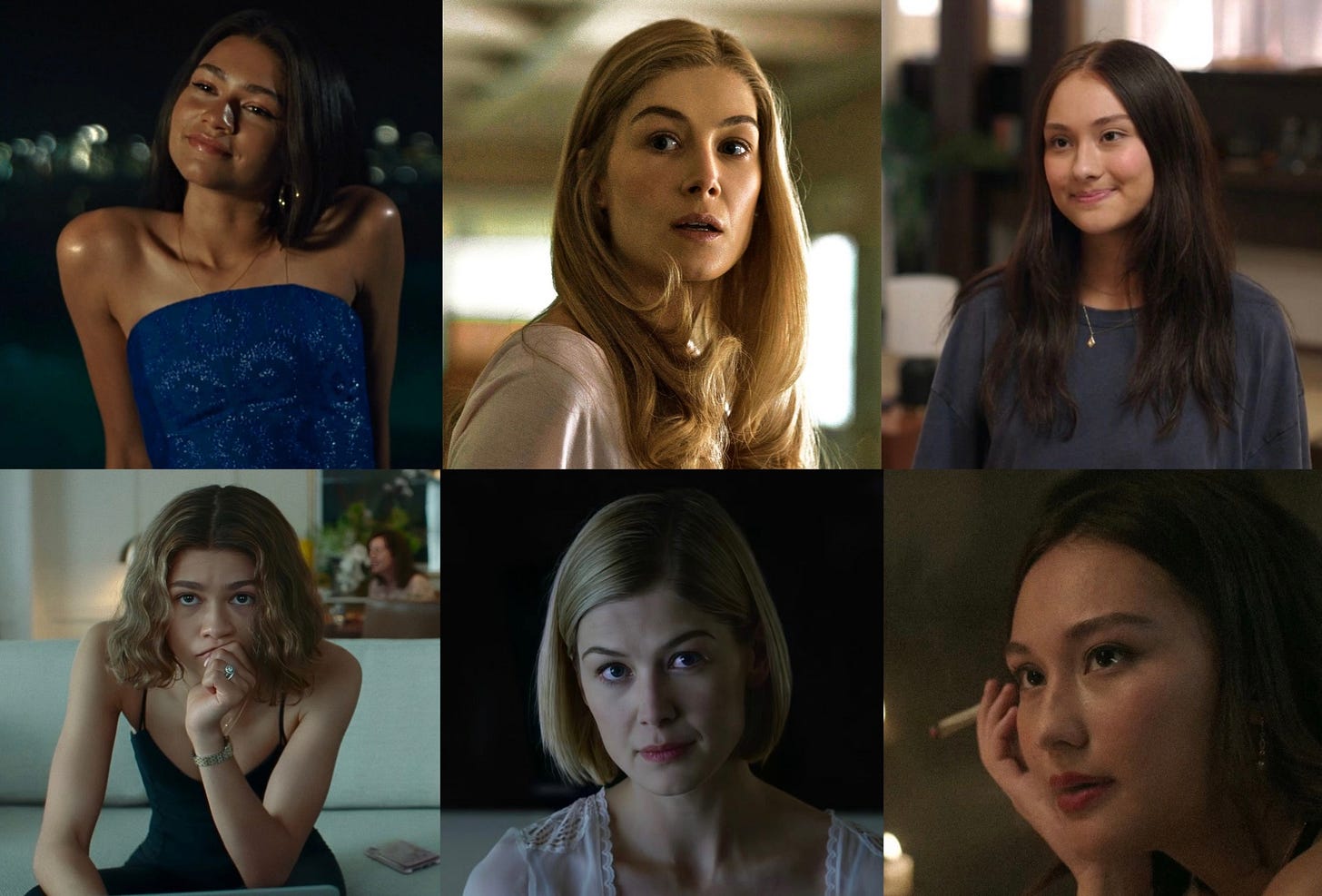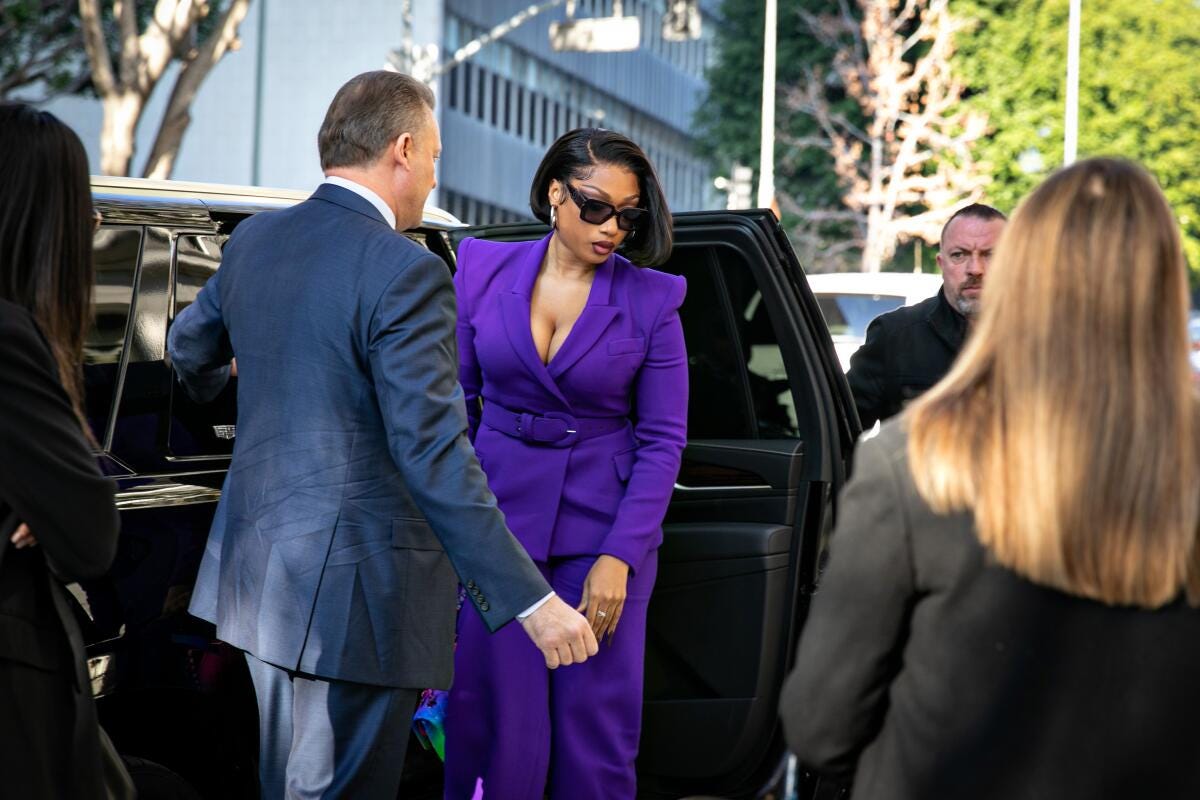Liberation via Bob
Symbolism Fashion & Symbolic Feminism
Drop yourself at any point throughout time and space, and you’ll find that hair has always meant something particular. Whether it’s cutting it, braiding it, straightening it, touching it, or not touching it, hair has long held personal, cultural, and spiritual significance to generations of individuals and the communities they inhabit. If the body keeps the score, hair certainly does some record-keeping of its own.
I was born with a full head of jet black fuzz, which grew, confusingly, into thick blonde ringlets as a toddler. When backlit by the sun, my hair made a dark yellow halo, nearly equal in diameter to my face. I often wore it down and tangled, or sometimes with a single braid down the front like Julie Albright, my American Girl doll. One day, in kindergarten, my mom smoothed it into a ponytail with “no bumps or wispies” like I requested, and a boy snuck up behind me and rummaged his hands through it, messing up the meticulous creation. I ran to the bathroom in tears and tried to salvage it to no avail, spending the rest of the day with a bulging ponytail bump around my crown. I never wore my hair up to school again.
Ballet ushered in much hair distress. Snapped hair ties and serrated bobby pins in my scalp were often my last straws, pushing me over the edge of emotional cliffs I was already wavering on. Hair has that kind of power. When I’m in a moment of high anxiety, the first thing I do - before drinking water, finding fresh air, or even taking a deep breath - is put my hair up. Get it out of my face and off my neck, and my cortisol levels have normalized.
The feeling of hair on your neck is a kind of comfort, a security blanket, literally shielding your eyes at times from a hostile, unforgiving world. But the security can turn into strangulation with a mere change in temperature or disposition. It only takes a slight shift in frame of mind for a weighted blanket to feel like a sack of bricks. Tucked-away sitting rooms and soft mattresses can turn into jail cells and quicksand. Only in wide open spaces do I feel the furthest from panic, when I can lie on the grass and stretch my arms out to their fullest wingspan, with no fear of anything unwanted encroaching.
This is the appeal of the bob. The jaw-length cut has symbolized many things, on and offscreen, throughout history, the most literal and tantamount being liberation. In the twentieth century, short women’s cuts were first popularized by the cultural elite, namely the likes of Coco Chanel and French actress Polaire. However, the style wasn’t seen as widely respectable until women began engaging in war work during World War I, as long hair was inconvenient. “The Gift of Magi,” a short story written by O. Henry in 1905, alludes to the general public’s attitude towards short hair in the early part of the twentieth century, as the main character, Della, jokes that her husband will kill her for cutting and selling her mane for extra cash. Henry writes:
“‘If Jim doesn’t kill me,’ she said to herself, ‘before he takes a second look at me, he’ll say I look like a Coney Island chorus girl.’”
The general reception of bobs has inched further from this in the last hundred years. Shorter hair has often come into American fashion on the precipice or during the aftermath of feminist waves, such as the 1920s and 1960s. When a woman sheds her long locks, she supposedly rids herself of the hindrances attached to longstanding beauty conventions. Her jaw, now exposed to the world, unclenches. She takes off her heavy wool coat, gulps a perpetual sip of fresh water, her head clearer, her focus sharper. If tumbling ribbons of princess hair are a mark of feminine beauty, a bob is the mark of an assassin, a hairstyle for ass-kicking. A bob subverts gendered beauty norms, but like all subversions, it eventually becomes a perversion - the style of the femme fatale, the dominatrix, the maneater. Think Black Widow, Mia Wallace, Shiv Roy, Peggy Olson, and even Riverdale’s Dark Betty.
In film and television, a woman’s bob often denotes passing time, emotional maturation, and, at times, backslides into lunacy. In Challengers (2024), Tashi Duncan sports Rapunzel-esque locks as a freewheeling seventeen-year-old, and a close-cropped bob and matching weathered expression as a former tennis player who never lived up to her potential. In the final scenes of Gone Girl (2014), Amy Dunne transitions from a blonde waterfall to a sharp chin-length cut after perfectly executing her plan to entrap her husband. In the case of Duncan and Dunne, the rigid cut symbolizes a desire for control in a life that’s seemingly slipped from their grip via a career-ending injury and a cheating husband, respectively. A bob is a painstaking hairstyle to maintain, but these women are good at nothing if not attempting to exact control, covering their tracks, and leaving no detail unaccounted for. The bob represents an overcorrection, a woman’s quest for independence and authority gone too far, horseshoing into a kind of insanity.
The bob occupies a similar role for Belly in the series finale of The Summer I Turned Pretty. After calling off her wedding due to lingering feelings for the groom’s brother, the show’s protagonist flees to Paris and eventually takes to constructing a new life. In attempting to shed the memories of her past relationships, she sheds, you guessed it, her hair. A bob allows Belly to better blend with her chic Parisian friends, but it also functions as a plot device, illustrating her burgeoning independence and upper hand in her dynamic with Conrad. After years of pining after her childhood crush, long locks swishing in the wind, the roles have reversed. Belly now assumes the more “masculine” part, pushing down her emotions, having sex without feeling, and blowing smoke - in all senses - while Conrad pours out his heart to her.
When women want to be taken more seriously, a desire to distance themselves from that which makes them appear traditionally feminine emerges. In doing so, they construct a new kind of forward-looking, seemingly hardened strain of femininity. Anna Wintour, the most powerful woman in media, sported a bob for the entirety of her reign at Vogue. Megan Thee Stallion wore a bob to testify in the 2022 Tory Lanez trial, after countless hip hop peers dismissed her allegations of Lanez shooting her. Girls speak with vocal fry, women speak “professionally,” which is to say they speak more like men. Girls play with their hair, women merely have hair; it doesn’t get caught in their lip gloss or sway too sensually or get in the way of looking a judge in the eyes.
The difference between style and fashion is duration: style is forever, fashion is fleeting. The former is more resistant to changing times; the latter is a reflection of those times. It’s unsurprising then that women’s fashion has changed - and continues to change - more rapidly and dramatically than men’s, as women’s role in society has changed more fiercely. Looking back two hundred years or so, 1820s men’s fashion is far more similar to contemporary men’s fashion than women’s. Frock coats are perhaps more similar, aesthetically, to modern men’s overcoats than Regency gowns are to modern slip dresses.
In any case, women’s fashion is seemingly always at some kind of odds with the ever-changing roles of women in society. Women are now more welcome than ever to occupy similar roles in public society as men, in the form of leadership positions and paid working jobs. But a quiet expectation always looms: if women want to be equal to men, they need to look and behave more like men. And seeing that few want to stoop to the role of “woman,” working women are so often burdened with the dual obligations of a Working Person and a Homemaker/Parent. Rather than broadening the circle, men ask women to straddle its perimeter. Be more like us because, obviously, we won’t be more like you.
Women’s fashion is always at odds with women’s roles because women’s roles are scattered and contradictory. Coming of age as a woman in the United States today couldn’t be a more confusing, cognitively dissonant experience. As a girl, people told me that I could be anything I wanted to be, and then I grew up to see how those same people treat women and wondered how on Earth that could be the case. I wonder how many of the men that I encounter - at work, at the doctor’s office, at the grocery store, etc. - view me with professionalism and reverence while hyper-sexualizing, scrutinizing, condemning, and perhaps victimizing other women, either personally or more generally. I often wonder what these men’s social media feeds look like, if some of them are dwelling in the manosphere while still respecting and relying on me. I wonder how many of them are holding both truths in their heads so securely.
I live in a world where the same men who respect and rely on me daily can also wish for me not to have bodily autonomy. Who will always still see me as inferior to my husband. Who will always still see me as a body or a Madonna before they see me as a coworker, neighbor, or friend, regardless of how I dress or act. At what point does it become a difference in political opinion, and at what point does it become harboring disrespect?
But this is about hair. And as I said, fashion is fleeting, so the bob is fleeting. For now, according to Allure and Cosmo, it’s enjoying a shining moment in the sun. Woman&Home magazine says it’s the “most powerful haircut of all time,” but Elle warns that it won’t “control-alt delete all your problems.” Thank you for the reminder. Sometimes symbols are merely symbolic, sometimes tokens are fungible, and sometimes fashion is less of a reflection and more of a rebuttal of the times. Women cut their hair for a myriad of reasons - to mark a fresh start, to emulate a movie star, and maybe even to exert control - but all those microreasons stem from an overarching megareason. They’re all nursed by the same line of logic. Women cut their hair to get it off their necks.








Me reading the title: “who the fuck is Bob?” 😂 brilliant piece Madison! I especially love your examination of the bob in film and what it can represent for characters. The transition of Tashi’s hair from long, girly free flowing sensual locks to a sleek, no nonsense bob was probably the most effective imo, aided by zendaya’s impeccable performance of course. And what a great closing line!
I loved this!!! I cut my hair in a bob at 19 and have never looked back!! Now it just feels like my normal hair, but when I did it at 19 it felt very symbolic and transformative. Loved seeing all the bobs in television and film!